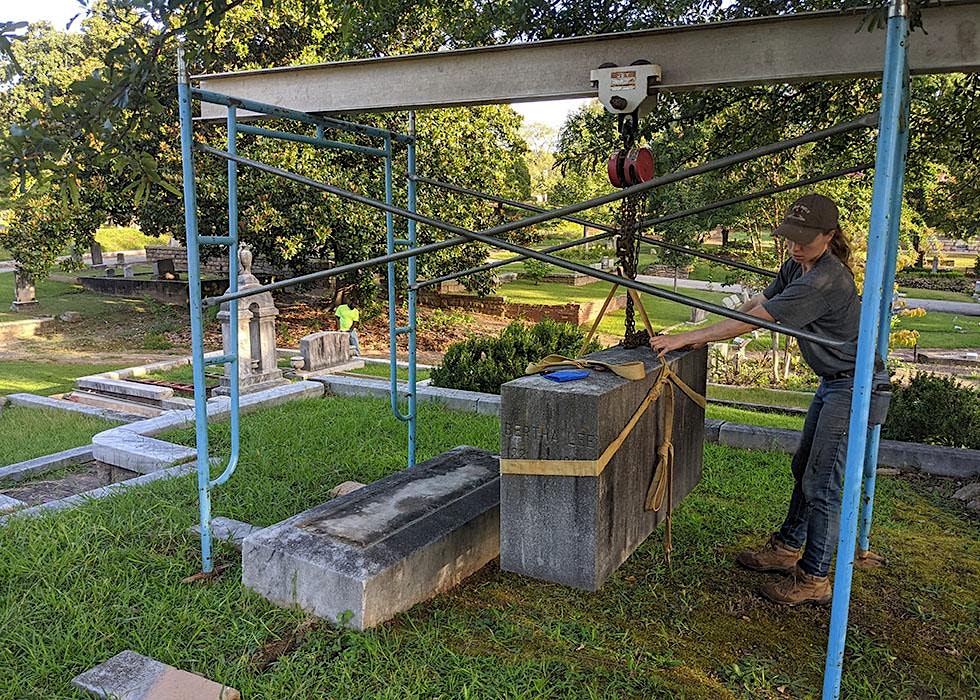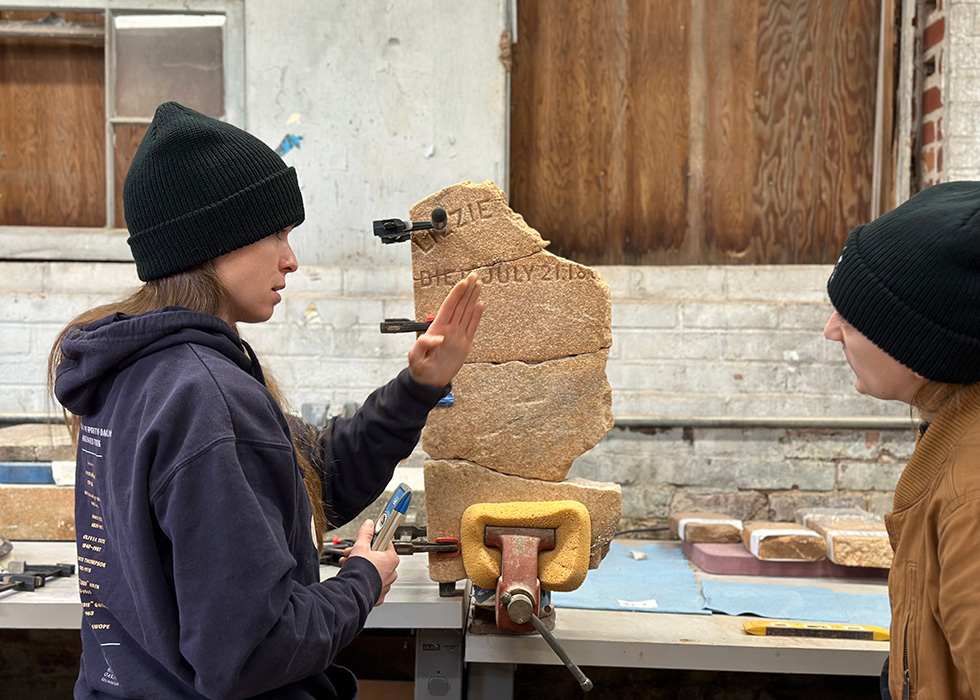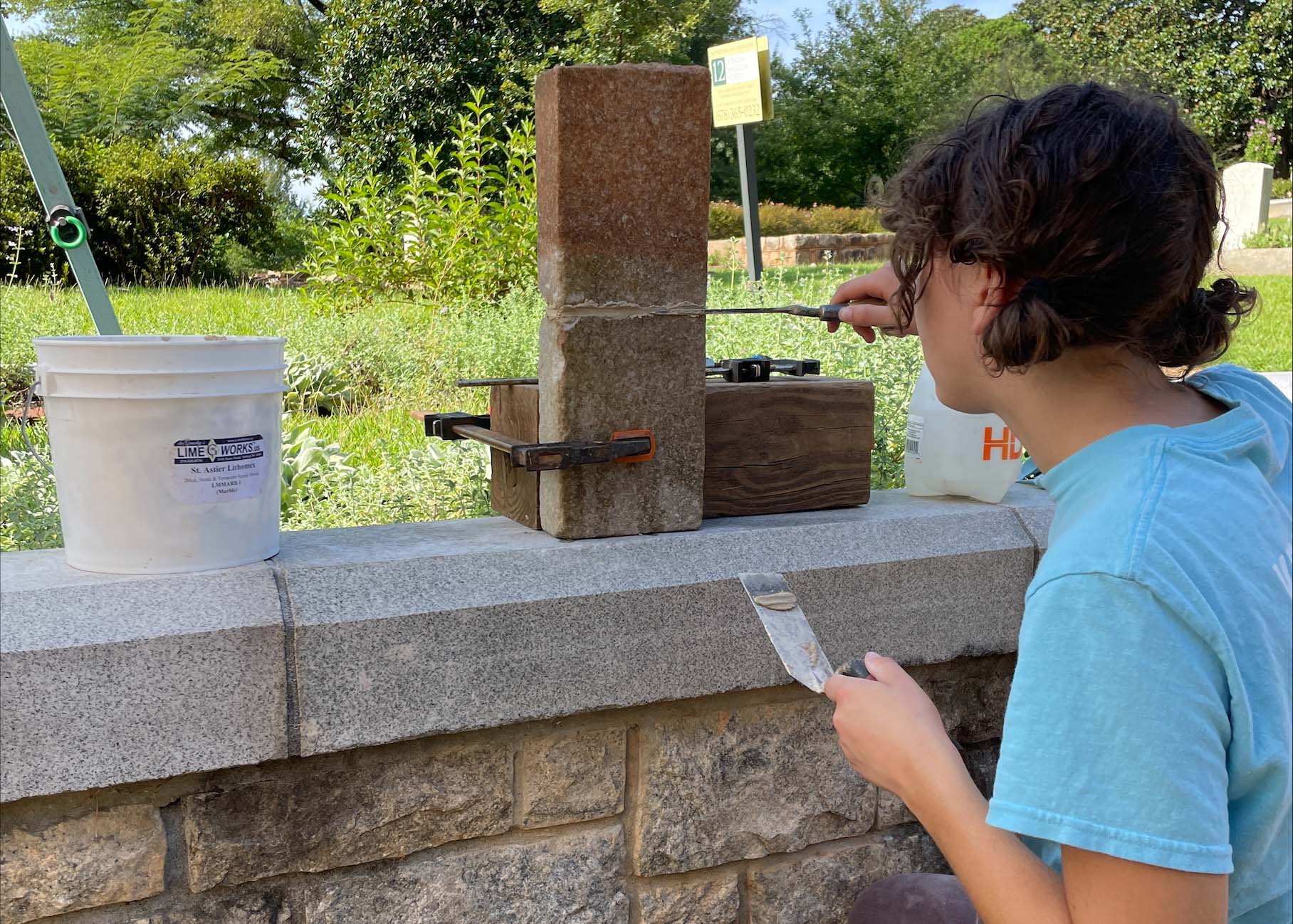
Lessons from Oakland’s African American Grounds Restoration
Winter is rapidly drawing in and with it, the third and final phase of the Preservation, Restoration and Operations (PRO) Team’s efforts in the African American Grounds is coming to an end. (Though truly, at Oakland Cemetery, preservation never really ends; it’s just one long continuous cycle.) As a master’s student in historic preservation at Georgia State, I started my internship at Oakland Cemetery back in January of this year and began right there in the African American section. Basically, everything I’ve learned about preservation and restoration at historic cemeteries so far (and I’ve still a lot more to learn, believe me), I owe to this part of Oakland, so I can’t help but feel a strong affection for it.
Along the way, I’ve learned about all the different approaches to dealing with headstones and footstones, towering monuments, ledgers, and all kinds of retaining walls: when to use compacted dirt and gravel or when to use a concrete base, when a leaning stone needs help with support, how to approach the restoration of cradling broken into multiple pieces, and how to gently clean a worn and dirt-covered headstone so as to reveal its long-forgotten inscription. What’s more, the African American Grounds have been the most fantastic venue to learn about the ‘exceptional’. Unlike in the rest of the cemetery, where granite and marble predominate, in this once-segregated area, grave markers, monuments, and lot outlines were constructed from a huge variety of different, readily-available materials. Of course, there are several grand obelisks and stones, reflecting the financial status of those interred there. But, more frequently, you will come across cradling constructed of bricks, or headstones made from cast concrete bearing hand-scrawled dedications and little in the way of decoration. Often these carry the name of a black funeral home such as Murdaugh Bros. and were probably intended as temporary markers until the family chose a more permanent marker, which obviously in some cases never happened. Often we’ve had to employ ingenuity in preserving the various markers and materials, though sometimes we’ve also, sadly, had to accept when certain items are beyond repair.
…what will stick with me most, though, are the cemetery inhabitants you find yourself surrounded by. …the names of those buried there start to become so familiar, it’s as if you start to get to know them.
In the African American Grounds, I’ve learned most about the effects of nature on burial sites and monuments. This segregated section, occupying a low-lying area on a steep slope towards the back of the cemetery, reflects both the lower socio-economic status and lack of basic civil rights of its inhabitants. The soil is largely of poorer quality, revealing a lack of care over more than 150 years, and there has been an enormous amount of erosion, as the topsoil has gradually drifted towards Boulevard Avenue. The results have seen numerous broken headstones and monuments leaning at sometimes crazy angles. Just the sheer drift of nature has meant that parts of the same headstone, for instance, have often ended up several yards apart. Detective work has been frequently required to piece stones back together and restore them to something close to their original state. Shifting soil has also resulted in many headstones finding themselves half- or even fully-submerged beneath the turf, with their inscriptions becoming faint and blurred in the process. Shining a cellphone light at right angles to the stone can sometimes help reveal a little more, and this if often followed by having to consult the cemetery archives and work out who the stone belongs to and where it should be.
I think what will stick with me most, though, are the cemetery inhabitants you find yourself surrounded by. When working on restoring a lot over several days or weeks the names of those buried there start to become so familiar; it’s as if you start to get to know them. These weren’t the famous, wealthy, white families of Atlanta that are buried further up the hill. Instead, in many cases, the histories behind the families here have been forgotten. Inevitably, you find yourself filling in the gaps and building up possible stories. You can’t help but feel for the grief that the Mitchells must have felt at losing a daughter so young. Or wonder about the identity of Mrs. Mamie White—whose broken simple headstone now faces the sky, awaiting repair. One of the earliest headstones I worked on preserving and replacing was that of Lula Dickson who, according to the fading inscription, died in 1892 at the age of 15. This was one of those instances where the stone had broken in two, with both parts becoming wildly separated from each other, and half-buried underground. Unearthing it, piecing it back together, and restoring it to its rightful place in a far-flung corner under a magnolia was a truly rewarding experience.



